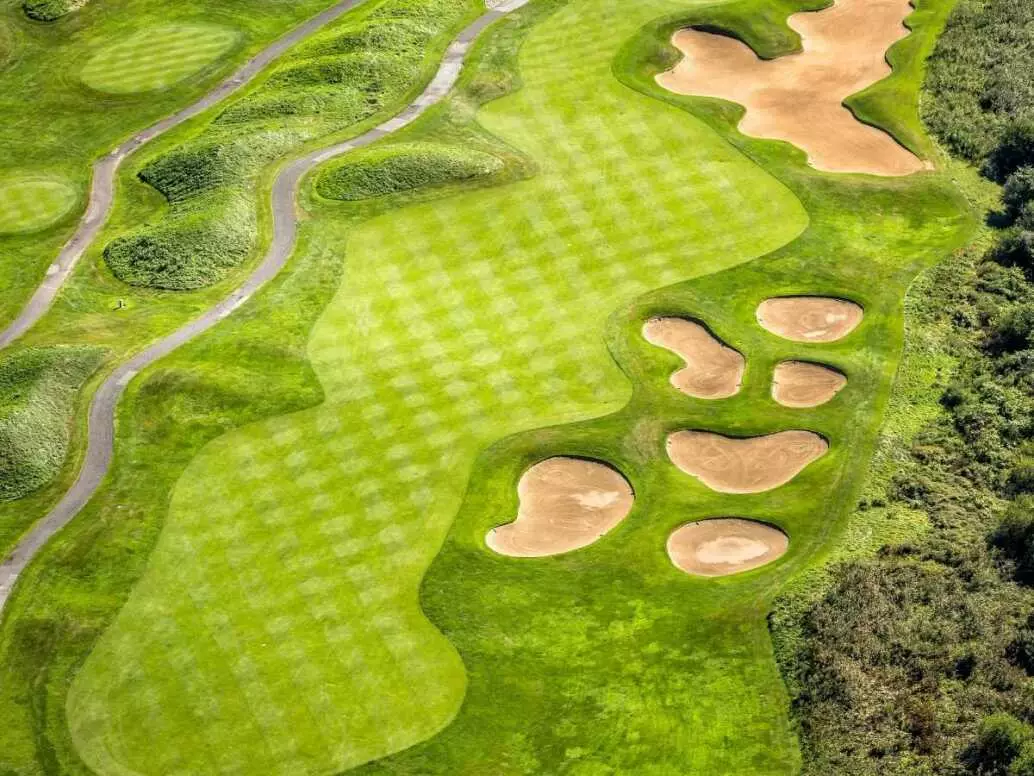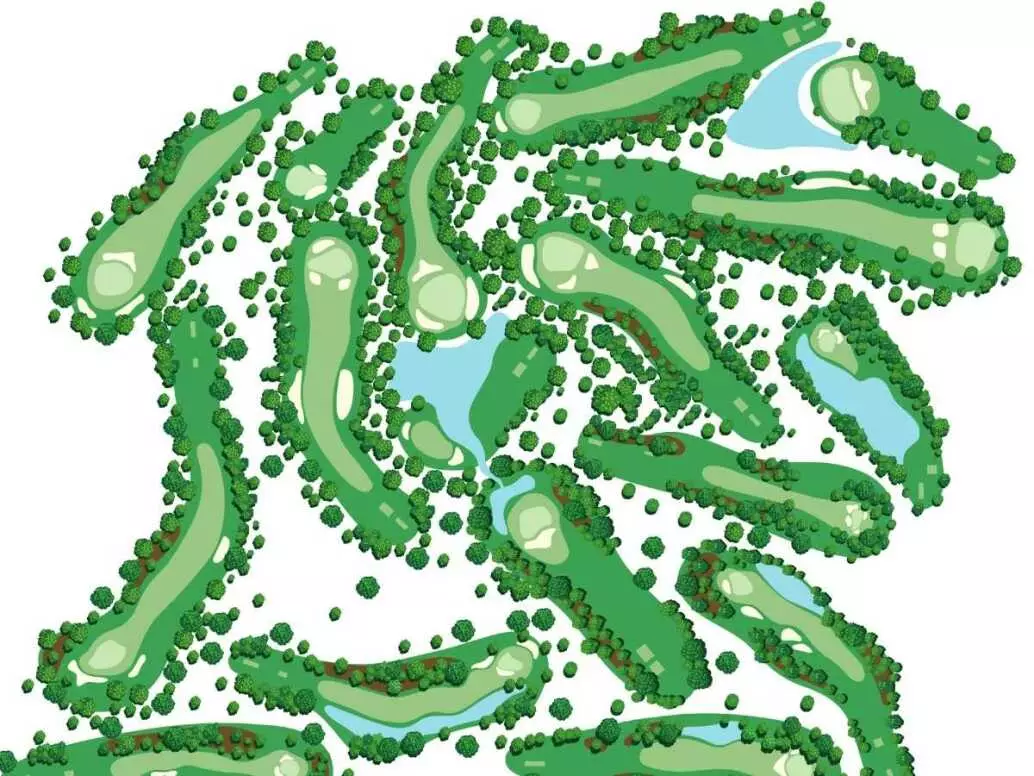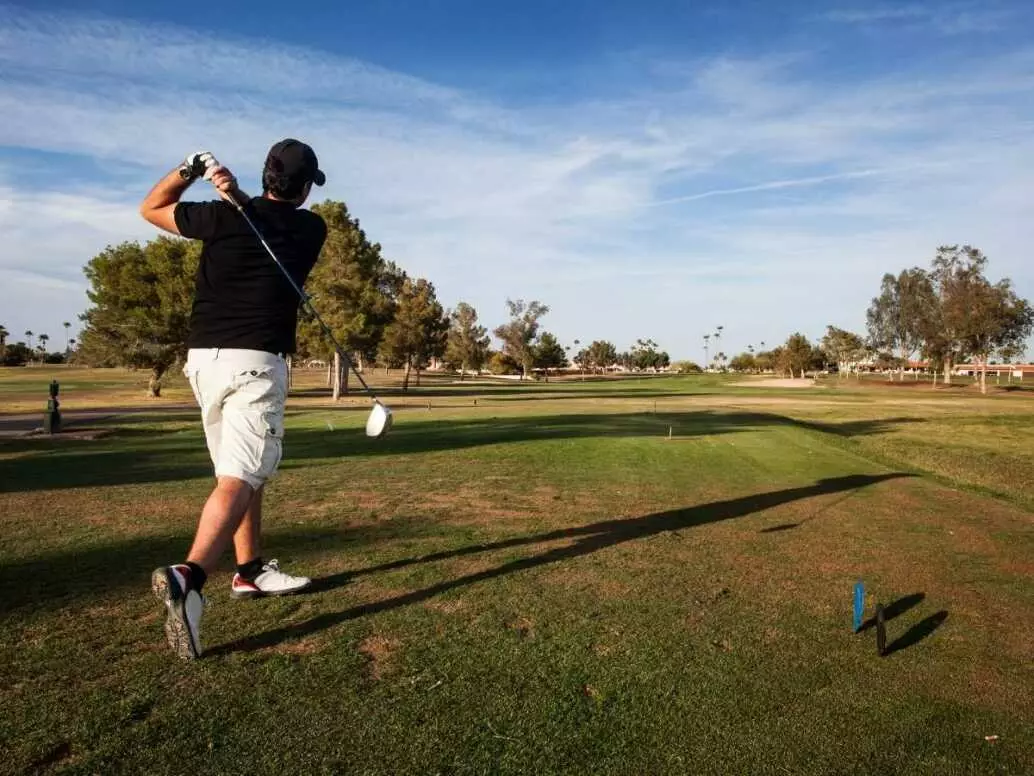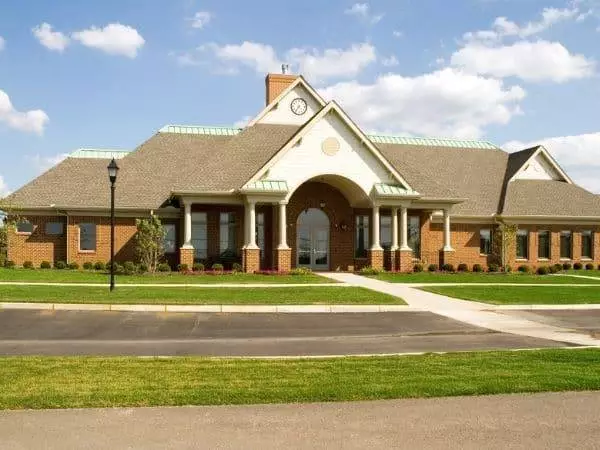Most golf courses are designed to have eighteen holes, and the player is expected to use a variety of clubs to hit a small ball into a series of small cups in as few strokes as possible. The course is typically filled with trees, water hazards and sand traps, and the player must navigate these obstacles while trying to hit the golf ball into the cup.
The 19th hole is usually the clubhouse, where most of us players can go to relax after the game, have a drink, and socialize with other players. This is where most of us golfers discuss our game, how we played, and what could have been done better.
Golf courses besides the sea are known as links courses. They’re typically located in Scotland and Ireland where the game began. Links courses are typically more exposed to the wind, and this can make them more challenging to play. The course must also take into account the surrounding landscape, as well as any water hazards that may be present.
What Is a Golf Course and How Is It Designed

Most golf courses are between 5,500 and 7,000 yards long, and they’re designed to be challenging for players of all skill levels. The average golfer will take between four and five hours to complete a round of golf.
Every hole is a par, which is the number of strokes that a skilled golfer should be able to complete the hole. The golf course consists of par-3, par-4, and par-5 holes. The majority of golf courses have four par-3 holes, ten par-4 holes, and four par-5 holes.
If you take a par-5 hole a par consists of a drive, two shots, and then two putts. A par-4 hole is usually a drive and a second shot, and then two putts. And a par-3 hole is usually just a drive or iron and two putts.
The Different Types of Golf Courses
Most of the golf courses in the USA have a total par of 72 consisting of 4 par 3s, 10 par 4s, and 4 par 5s. A few have a total par of 71 or 70. The Old Course at St. Andrews in Scotland has a total par of 72.
There are different types of golf courses such as: Municipal Courses, Private Clubs, Daily Fee Courses, and Resort Courses.
Municipal Courses
Municipal golf courses are owned and operated by the city or county they’re in. They’re open to the public and usually have lower greens fees than private clubs or daily fee courses.
Private Clubs
Private clubs are just that, private. You must be a member or guest of a member to play on the course. Private clubs usually have higher greens fees than municipal courses.
Daily Free Courses – Public Courses
Daily fee courses are open to the public and anyone can play by paying a daily fee. These courses usually have higher greens fees than municipal golf courses, but they’re not as high as private clubs.
Resort Courses
Resort courses are owned and operated by resorts. They’re open to the public, but they usually have higher greens fees than municipal, private, and daily fee courses.
The Layout of The Golf Course

I love the feeling of being out on the golf course and taking in all the scenery. The smell of fresh-cut grass, the sound of the birds chirping, and the beautiful landscape. Golf courses are designed to be challenging, but they’re also designed to be scenic. The layout of the golf course must take into account the surrounding landscape.
Fairways
The fairways are the areas of the golf course that are mowed short and are the main playing areas. The rough is the area of the golf course that is not mowed short and is usually longer grass.
The fairway and the rough are separated by a strip of grass called the collar. The primary purpose of the collar is to separate the fairway from the rough and to help with drainage.
Greens
The greens are the areas of the golf course where the hole is located. The greens are mowed short and usually have a lot of undulation.
Hazards
Golf courses also have bunkers, which are areas of sand that are designed to be difficult to play from. Bunkers are usually located near the greens or fairways. Water hazards are also present on many golf courses. They’re usually either ponds or streams, and they can make a hole more difficult to play.
The Clubhouse
Is the place where most of us start and end our round of golf. It’s also a place where we can go to relax after the round, have a bite to eat, and socialize with other golfers. This is the place where we can talk about our round, good or bad.
I find myself wandering around the pro shop from time to time, looking at the latest golf clubs and gadgets. The advantage of the clubhouse is that it’s usually located close to the first tee, which makes starting the round of golf a lot easier.
Regulation Yardages

According to USGA the yardages that determine par for a hole are:
| Par | Men | Women |
| 3 | Up to 260 yards (240 metres) | Up to 220 yards (200 metres) |
| 4 | 240 – 490 yards (220 to 450 metres) | 200 to 420 yards (180 to 380 metres) |
| 5 | 450 to 710 yards (410 to 650 metres) | 370 – 600 yards (340 to 550 metres) |
| 6 | 670 yards and up (610 metres and up) | 570 yards and up (520 metres and up) |
You will also see that there is more than one teeing area on most golf courses. The different teeing areas represent different skill levels. The further back you tee off, the more difficult the hole will be to play.
Conclusion
The golf course is a beautiful place to be. It’s the perfect location for taking in all of nature and enjoying some time away from your everyday life. Golf courses are designed not only as challenging courses but also with an eye toward beauty. The layout of the golf course must take into account the surrounding landscape so that it can serve as both scenic and challenging. A clubhouse is a great place to start and end your round of golf, as well as to socialize with other golfers. Knowing the regulation yardages for each hole can help you to plan your game strategy. Finally, understanding the different teeing areas will help you to choose the one that best suits your skill level.





